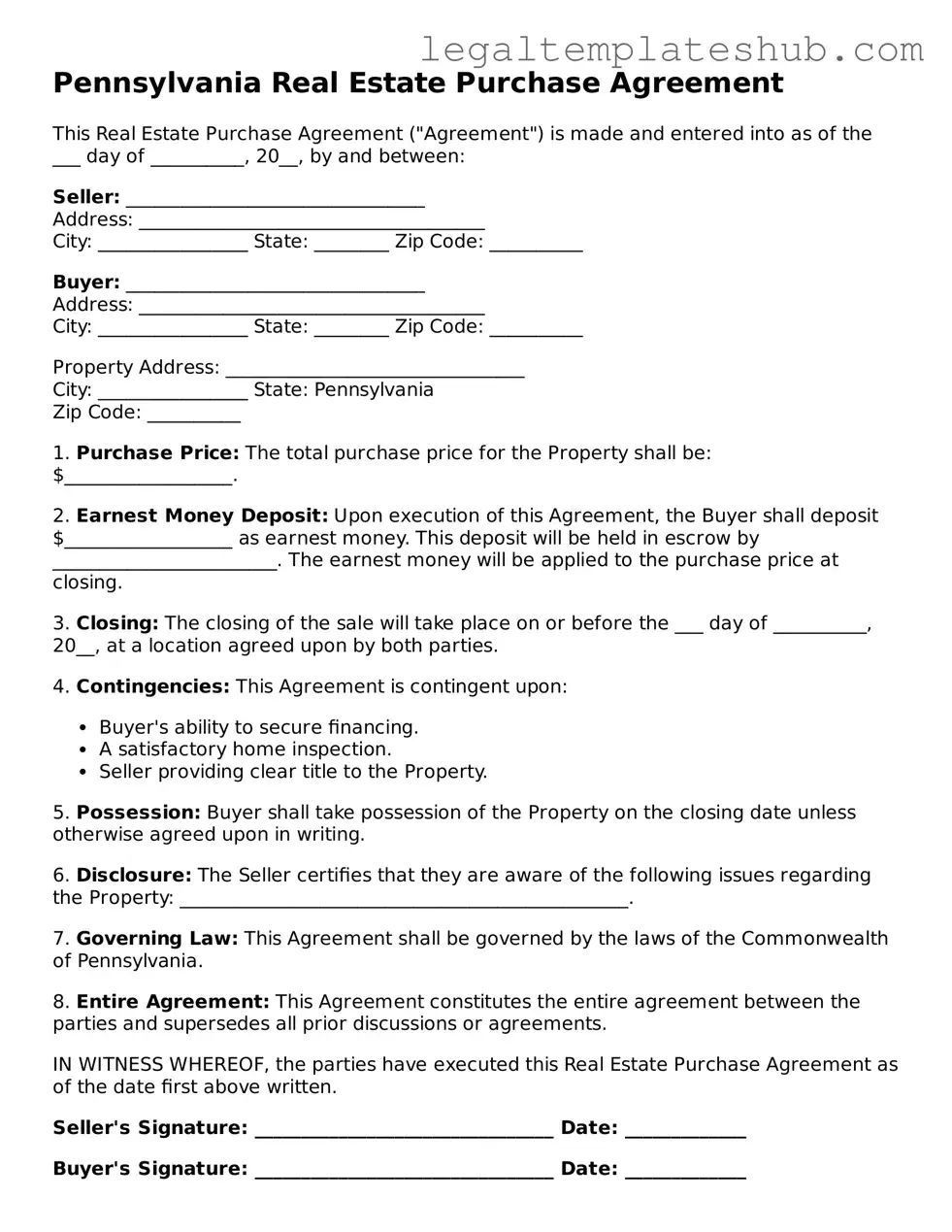Printable Real Estate Purchase Agreement Document for Pennsylvania
The Pennsylvania Real Estate Purchase Agreement is a legal document that outlines the terms and conditions under which a buyer agrees to purchase a property from a seller. This form serves as a binding contract, detailing important aspects such as the purchase price, contingencies, and closing date. Understanding this agreement is crucial for both buyers and sellers to ensure a smooth transaction process.
To get started on your real estate journey, fill out the form by clicking the button below.
Access Editor
